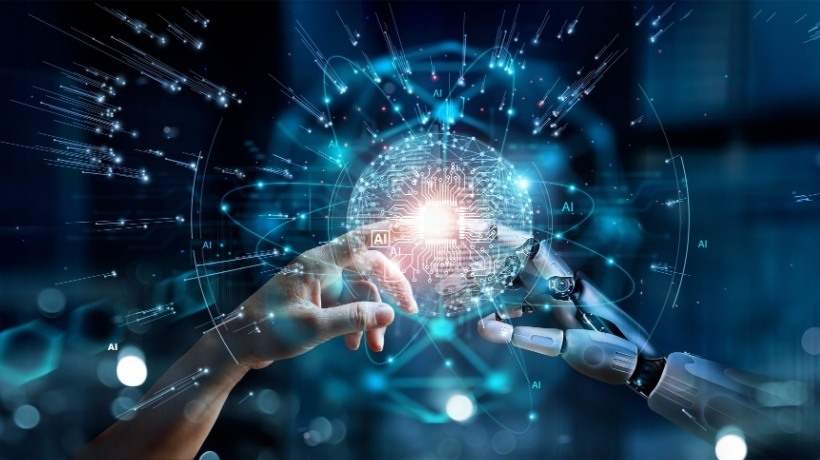Smarter Hiring Meets Smarter Learning
Let's be honest—hiring and training often feel like two completely separate worlds. You find a great candidate, go through a bunch of interviews, give them the offer... and then hand them off to the Learning and Development (L&D) team with a generic onboarding checklist. It's a little like recruiting someone to join your sports team, then sending them to the wrong practice drills. The skills they bring to the table don't always match what they're being trained for. It's not intentional—it's just how things have been for a long time. But that's starting to change. Thanks to the rise of smarter hiring tools—particularly AI hiring platforms—companies are beginning to connect the dots between how someone is hired and how they're trained. And that connection is starting to flow directly into Learning Management Systems (LMSs), creating personalized learning paths that actually reflect the person behind the job title.
The Old Way: Why Hiring And Learning Often Felt Disconnected
Historically, the hiring process was focused on checking boxes. Does this person have the right degree? Have they worked at the right places? Do they sound confident in the interview? Then, once they were hired, the Learning and Development team would step in with little or no context about how the candidate got through the door in the first place. This led to a few common issues:
- New hires getting one-size-fits-all training programs.
- Learning content not matching the employee's actual strengths or weaknesses.
- Longer ramp-up times because the learning plan had to start from scratch.
This disconnect wasn't anyone's fault. Hiring teams and training teams often work in silos. But in today's fast-moving, skills-driven world, it's becoming clear that we need a better way.
Where Things Are Shifting: Real Data From Real Candidates
Now imagine a different approach. Picture a hiring process where, instead of just assessing someone based on their resume and how well they perform under pressure in a 30-minute Zoom call, you actually gather rich, practical insights about their communication, problem-solving, decision-making, and real-time thinking. This is where the shift is happening.
Modern AI hiring platforms are capturing more meaningful data—the kind that tells a story about how someone thinks, learns, and performs. And once you have that story, you can do something powerful with it: you can feed it directly into your LMS. Suddenly, hiring isn't just about finding the right person. It's about setting them up to thrive from day one.
What AI Hiring Platforms Really Capture (Beyond Resumes)
Let's clear something up right away: when we say "AI hiring platform," we're not talking about robots making hiring decisions or weird black-box scoring systems. At its best, an AI hiring platform acts more like an enhanced mirror. It reflects what the candidate brings to the table, but with more clarity and fewer blind spots. Instead of only noting whether someone "sounded confident," the platform can:
- Track how well they structure their answers.
- Note how they handle ambiguity.
- Identify behavioral patterns (do they lead with logic or emotion?)
- Detect communication styles (direct, reflective, detail-oriented, etc.)
- Map responses to job-specific competencies.
This data is clean, structured, and—most importantly—actionable. And that's where the magic begins.
Making That Data Useful: Feeding It Into LMS For Smarter Training
Here's the big opportunity: once you've captured real insights about a new hire during the interview process, you can feed that directly into your LMS. Instead of sending everyone the same onboarding video series, your system can:
- Assign learning modules that match the candidate's weak areas.
- Skip redundant training where the hire already excels.
- Adjust pace or format based on how they learn best.
- Recommend skill-building paths aligned with their role and team needs.
Let's say a new hire shows strong analytical thinking but struggles with structured communication. Why not prioritize learning modules on business writing or stakeholder presentations? Or if someone shows deep technical knowledge but limited collaboration experience, you could nudge them toward team dynamics training. With the right LMS integration, the learning path becomes truly personalized—not just based on their role, but on who they are and how they think.
Real-Life Example: From Interview To Custom Learning Plan
Imagine hiring a mid-level project manager. During the interview, they score high on strategic planning and prioritization but show hesitation in conflict resolution and stakeholder negotiation. Normally, this nuance might get buried in post-interview notes or not passed on at all. But with an AI hiring platform, these traits are captured clearly. Now, when the hire starts, your LMS already has that data. Instead of the standard project management onboarding plan, the LMS can:
- Provide advanced modules in project strategy (to keep them engaged)
- Offer targeted content on managing team conflict and communication styles.
- Suggest optional peer mentorship or simulated scenarios to practice soft skills.
All of this happens automatically, behind the scenes. The candidate gets training that feels like it was made for them—because it was. And your organization benefits from faster ramp-up, stronger performance, and a more empowered team member.
The Win-Win For Employers And Employees
This kind of integration isn't just a tech upgrade; it's a people-first shift.
- For employers
-
- You get higher retention because employees feel seen and supported.
- You accelerate time-to-productivity.
- You build a stronger culture of learning and growth.
- For employees
-
- They're not wasting time on content they already know.
- They get help in areas where they genuinely want to improve.
- They feel like the company is invested in their development, not just their output.
It's the kind of alignment that builds long-term trust and loyalty.
Steps To Start Integrating AI Hiring Data With Your LMS
This may sound futuristic, but it's completely doable right now. Here's how you can get started:
1. Choose An AI Hiring Platform That Captures Skills And Behaviors
Look for tools that give you structured data on candidate competencies, soft skills, and learning potential—not just resume keywords.
2. Map Hiring Data To Your LMS Learning Tracks
Work with your L&D team to align the hiring insights with existing LMS modules or create new ones that reflect real gaps.
3. Automate The Handoff Between HR And L&D
Use tools or integrations to pass candidate data from the hiring platform directly into your LMS or employee profile system.
4. Test With A Pilot Group
Start with one department or team to measure results, gather feedback, and improve your approach before scaling.
5. Refine Based On Feedback
As more employees go through this new flow, collect their input. Did the learning path feel relevant? Was it too fast, too slow, or just, right?
Conclusion: A Smarter Way To Work And Learn
We've spent years treating hiring and learning as two separate checkboxes. First you get the person, then you train them—with little connection between the two. But today, we have the tools and the insight to do better.
By using data from an AI hiring platform and feeding it directly into your LMS, you create a talent ecosystem that's smarter, faster, and more human. No more cookie-cutter onboarding. No more wasted time. Just meaningful development that starts with who someone is, not just where they've worked.
It's time to stop guessing. And start growing. Because when hiring meets learning at the right moment, everyone wins.









